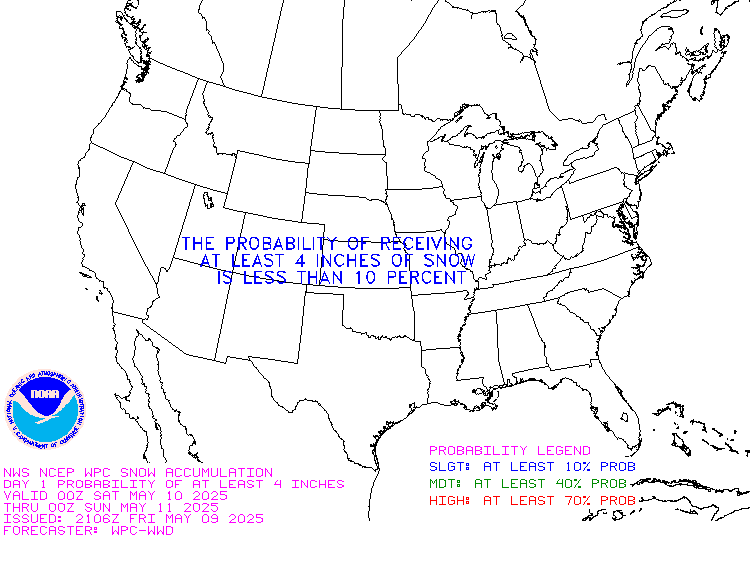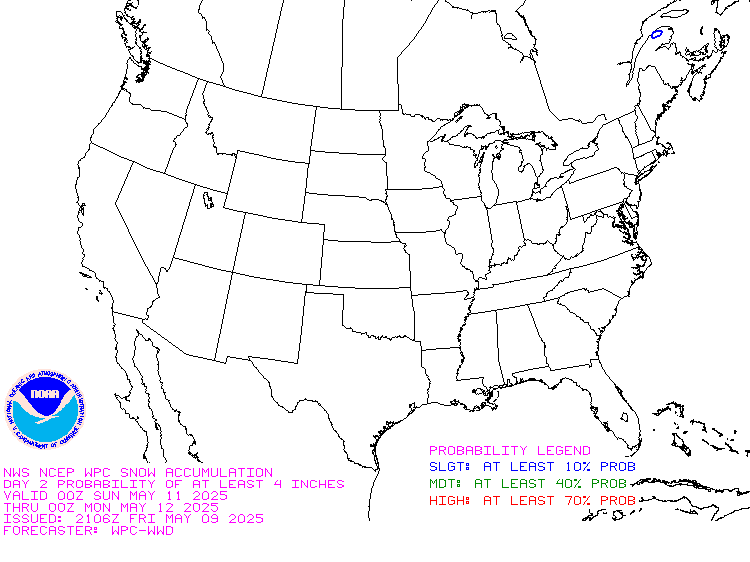This article focuses on what we are paying attention to in the next 48 to 72 hours. The article also includes weather maps for longer-term U.S. outlooks and a six-day World weather outlook which can be very useful for travelers.
First the highlights from the NWS.
Short Range Forecast Discussion
NWS Weather Prediction Center College Park MD
Wed Jan 10 2024
Valid 12Z Wed Jan 10 2024 – 12Z Fri Jan 12 2024…Strong storm affects New England on Wednesday, followed by improving
conditions……Unsettled weather conditions continue for the Western U.S. with much
colder temperatures arriving for the Northern Plains…
Please click on “Read More” below to access the full report issued today.
| Notices: The article on the Updated Outlook for January 2924 can be accessed HERE. What would you like to learn about? Please provide that to me via the comment section at the end of the article. |
Now more detail on the 48-Hour Forecast (It is a 48 to 72 Hour Forecast actually)
Daily weather maps. The Day 1 map updates twice a day and the Day 2 and 3 maps update only once a day. These maps update automatically. But if that does not happen, you can get updates by clicking HERE
TODAY (or late in the day the evening/overnight map will appear) (Key to surface fronts shown on maps and you will then also be able to insert a city name or zip code and get a local NWS forecast).
TOMORROW
NEXT DAY
This animation shows how things may play out over the next 60 hours. To update click here.
The NWS Climate Prediction Center’s: Watches, Warnings, and Advisories plus other information can be found HERE. We post at least one of those updates daily, sometimes both. The Highlights are shown in the lede paragraph of this article.
ATMOSPHERIC RIVERS
This tells us what is approaching the West Coast. Click HERE to update If I have not gotten around to doing the update. Here is some useful information about Atmospheric Rivers.
Continuation of the NWS Short Range Forecast. It is updated by NWS twice a day and these updates can be found here
A very potent mid-upper level trough over the Northeast U.S. is sustaining
a very strong surface low over southern Ontario early Wednesday morning,
and this low will continue lifting toward the northeast across southern
Quebec by Wednesday evening. The strong cold front trailing south from
the parent low will exit New England by Wednesday afternoon. Widespread
hazardous weather impacts are expected for the Northeast U.S. in
association with this low pressure system on Wednesday, and numerous
warnings and advisories are now in effect from the local NWS forecast
offices. One of the big things making weather headlines will be the heavy
rain capable of producing flooding from southern New England to southern
Maine. There is a Slight Risk of excessive rainfall now highlighted by
the Weather Prediction Center for Wednesday across southern portions of
Maine, where the combination of 1 to 3 inch rainfall totals over highly
saturated, and in some cases snow covered ground, along with swollen
creeks and streams, will elevate the potential for flooding across this
region. It will also be quite windy across this region as well, with
winds gusting over 50 mph, especially near the coast and for elevated
areas where gusts will likely exceed 60 mph. Therefore, high wind
warnings are in effect for many areas near the coast and the higher
terrain of the Northeast, and storm warnings for the open waters. This
will also cause instances of coastal flooding where strong onshore flow
piles up water into rivers and bays.For the Western U.S., the weather pattern will also be active with a
strong Pacific front moving inland with very heavy snow for the Cascades
and Sierra, and then across the higher mountain ranges of Nevada, with
snow levels dropping over time. This disturbance then settles
southeastward across the Desert Southwest and this brings valley rain and
mountain snow across Arizona and New Mexico going into Thursday.
Meanwhile, a potent arctic front drops southward from Canada on Wednesday
and this will herald the arrival of the coldest temperatures so far this
season for the Northern Plains, with subzero lows becoming a reality for
Montana and the Dakotas, and highs remaining below freezing as far south
as Oklahoma by Friday. This arctic airmass will likely persist well
beyond this forecast period.The combination of this front and the storm system from the southwestern
U.S. will eventually result in a much larger low pressure system
developing over the Southern Plains by the end of the week. The initial
set-up for this next event is quite similar to the ongoing event that is
now concluding over the Eastern U.S. with a comparable track for the
surface low, but the main difference is a greater supply of arctic air
northwest of the low track. Blizzard conditions are becoming increasingly
likely for portions of the Midwest as the low quickly deepens, and a
return to severe thunderstorms and heavy rain for the Gulf Coast region.
This storm system will continue to be monitored closely since it will
likely be highly impactful once again for the east-central U.S. on Friday.
Learn about wave patterns HERE.
Below is the current five-day cumulative forecast of precipitation (Updates can be found HERE)
Ski SnowReports
New Feature – Ski Reports. It is difficult to find reports that auto-update on-screen (and they are very long) but these links will get you to them – If you have additional suggestions make them in the comments section after every Econcurrents Article and we may add those links. We will try to not have too much overlap as that can add to the confusion.
Snow Forecasts. And remember this shows natural snow. Ski resorts also make their own snow.
Day 1

Day 2

Additional snow information can be found here and here. The second link provides animations.
Now we look at Intermediate-Term “Outlook” maps for three time periods. Days 6 – 10, Days 8 – 14, and Weeks 3 and 4. An outlook differs from a forecast based on how NOAA uses these terms in that an “outlook” presents information as deviation from normal and the likelihood of these deviations.
Below are the links to obtain updates and additional information. They are particularly useful if you happen to be reading this article significantly later than when it was published. I always try to provide readers with the source of the information in my articles.
| Days 6 – 10 (shown in Row 1) | Days 8 – 14 (Shown in Row 2) | Weeks 3 and 4 (Shown in Row 3 but updates only on Fridays) |
| https://www.cpc.ncep.noaa. gov/products/predictions/610day/ | https://www.cpc.ncep .noaa.gov/products/predictions/814day/ | https://www.cpc.ncep.noaa.gov/products/predictions/WK34/ |
Showing the actual maps. They should now update automatically. The Week 3 – 4 Outlook only updates on Fridays. So below is what I call the Intermediate-term outlook. On Fridays, it extends out 28 Days. That declines day by day so on Thursday it only looks out 22 days until the next day when the Week 3 – 4 Outlook is updated and this extends the outlook by one additional week.
| 6–
10
|
|
|
| 8–
14 |
|
|
| 3–
4 |
|
|
HAZARDS OUTLOOKS
Click here for the latest complete Day 3 -7 Hazards forecast which updates only on weekdays. Once a week probably Monday or Tuesday I will update the images. I provided the link for readers to get daily updates on weekdays. Use your own judgment to decide if you need to update these images. I update almost all the images Friday Night for the weekend edition of this Weather Report. So normally readers do not need to update these images but if the weather is changing quickly you may want to.
Temperature month to date can be found at https://hprcc.unl.edu/products/maps/acis/MonthTDeptUS.png
Precipitation month to date can be found at https://hprcc.unl.edu/products/maps/acis /MonthPNormUS.png
World Forecast
Below are the Day 1 -3 and 4-6 forecasts for temperature and precipitation. Updates and much additional information can be obtained HERE
World Temperature Anomalies
World Accumulated Precipitation
This information is provided by the University of Maine. They draw upon many different sources. There is a lot of information available at the link provided. I have just provided two useful forecasts. There are probably over a hundred different forecasts available from this source.
Worldwide Tropical Forecast (This is a NOAA Product)
This graphic updates on Tuesdays) If it has not been updated, you can get the update by clicking here Readers will only have to do that if they are reading this article much later than the date of it being published.
Information on Tropical Storms can be found HERE. Western Pacific information can be found HERE.
–
| I hope you found this article interesting and useful. |
–

